Starting Lineup: Interference surge and 8 more MLB items
Starting Lineup is a biweekly collection of reporting, observations, and insights from the baseball beat, published every other week during the regular season.
Leading off …
Injury prevention is perhaps another reason to favor an automated strike zone.
Consider the unfortunate fracture St. Louis Cardinals catcher Willson Contreras sustained this week.
Contreras was too close to the plate, and New York Mets designated hitter J.D. Martinez was perhaps too far back in the batter's box. Martinez swung and connected with Contreras' forearm.
Why was Contreras so close to the plate? Incentives led him there, Detroit Tigers manager A.J. Hinch explained to reporters this week in Cleveland.
"The closer we get to the plate, the more strikes we can grab at the bottom rail," Hinch, a former big-league catcher, said of the bottom of the strike zone. "Catchers are getting evaluated and they're getting paid on how well they can control the bottom rail, and that's led to more and more catcher interference throughout the game. I think it's triple what it used to be."
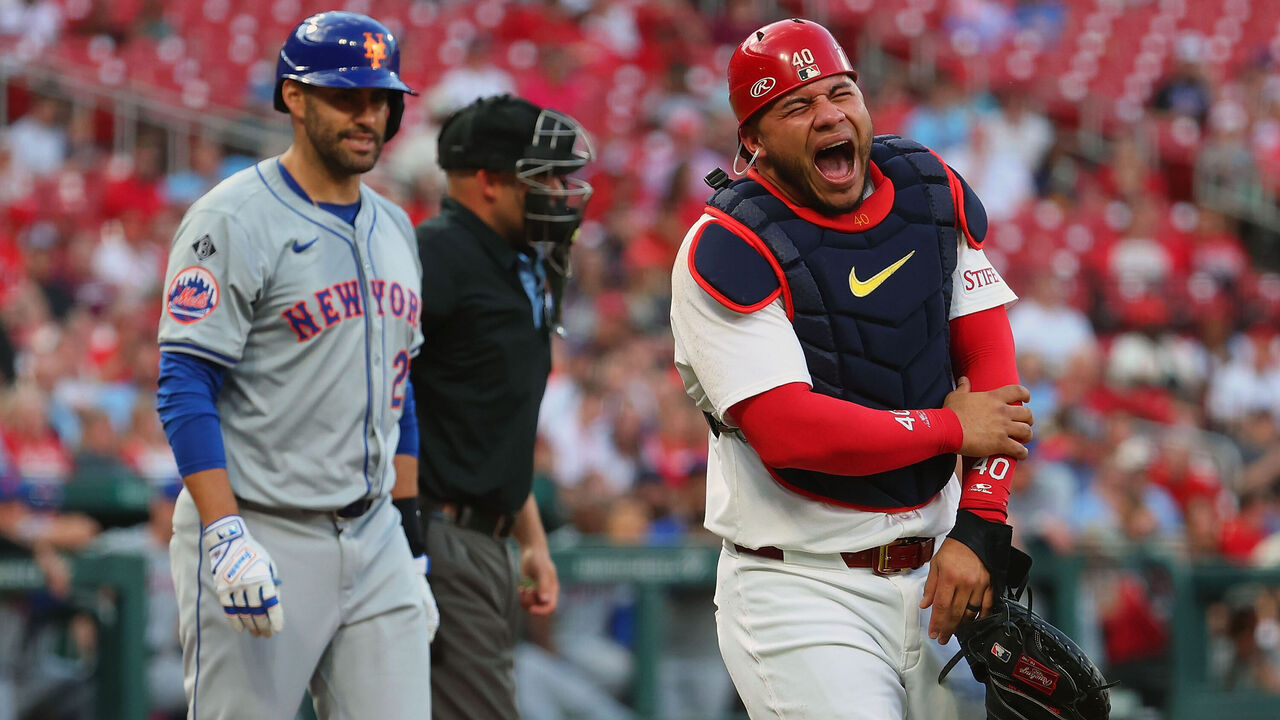
The bottom of the strike zone, and the gray area below it, is the most common area to earn a borderline strike call. The most valuable aspect of catcher defense that can be quantified is how well he frames pitches.
Hinch is correct that catcher interference calls are on the upswing, but he undersold the increase.
According to data from Baseball Savant, the number of catcher interference calls has skyrocketed.
There were fewer than 10 per season in all of Major League Baseball between 2010-17. The rate more than quadrupled from 2018 to 2019, and incidents this season are on pace to easily exceed last year's record total.
Tanner Swanson, the New York Yankees' catching coordinator, popularized the knee-down catching stance that's sweeping through baseball. He also moves catchers closer to the plate. He said it's a "calculated risk, without question."
"But there is a lot that goes into evaluating and ultimately mitigating the risks while still extracting benefits," Swanson said. "The problem is that we work in a copycat league and some teams are quick to jump on something before they've done the work … before they really understand the nuances of it. I'm not saying that's what happened (with Contreras), but this is a sophisticated tactic. Unfortunately, it's not as simple as, 'Move the catcher closer and we'll steal more strikes.'"
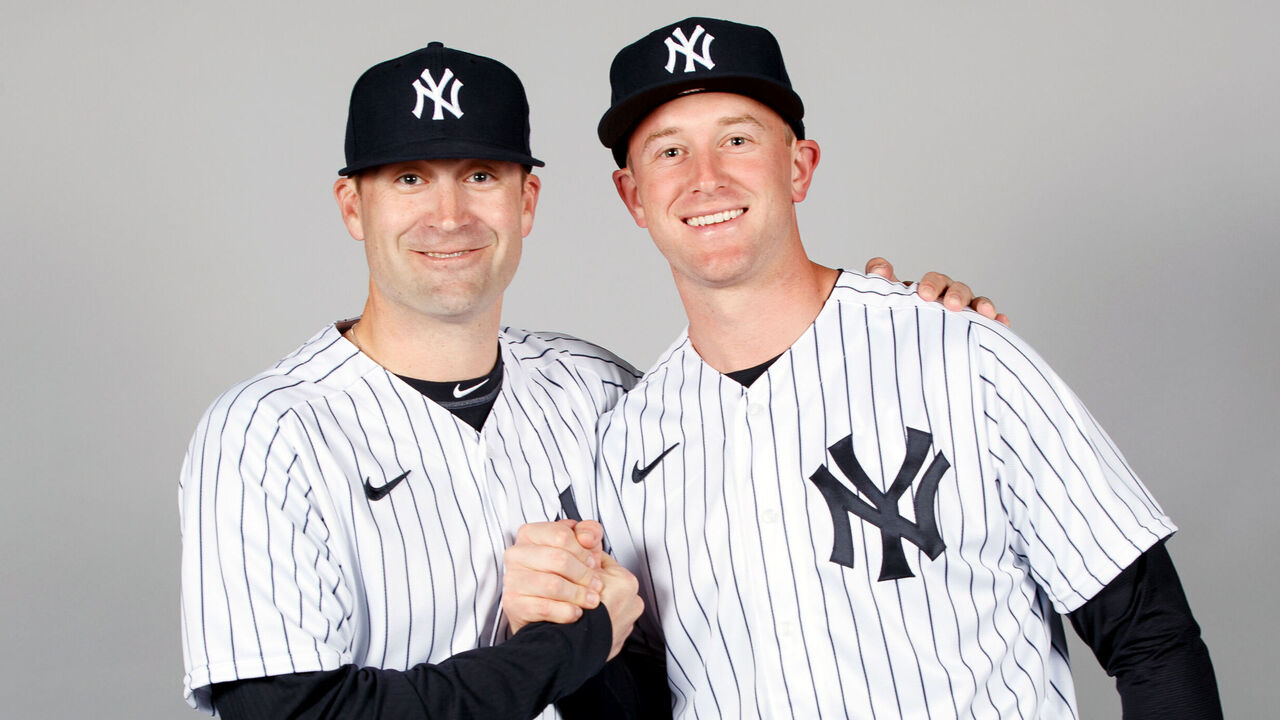
What, if anything, to do about it is unclear. While Contreras' injury is unfortunate, it's still a relatively rare case.
Swanson believes it's too early to enact new legislation to reduce catcher interference.
"Nobody wants to see anyone get hurt, obviously. But I also don't think the solution is as simple, either," he said. "Moving closer may increase the risk of (interference), and in rare cases hand and wrist injuries, but I think it's also mitigating head injuries from fewer off the face, which is a much more concerning issue. That's something I’d want to evaluate closely before considering any rule (changes) that push catchers further away from the plate. Personally, I think it will self-correct on its own."
2. Motor City manufactures … pitchers?
The Detroit Tigers have hardly been known for developing pitchers in recent years. But in 2024 they have a top-10 rotation by ERA and WAR through Thursday's games. They are enjoying breakout stories like that of Tarik Skubal, who's performing like a Cy Young contender, and successful reclamation projects like that of Jack Flaherty, who was signed as a free agent in December.
They've helped pitchers make modern adjustments like getting Skubal to embrace seam-shifted wake movement with his offspeed and breaking pitches. They've also preached effective old-school but timeless approaches like getting ahead of batters.
Only the Seattle Mariners have a greater first-pitch strike percentage than Detroit (66%) this season.
Flaherty, whose career looked like it was on the downswing in recent years, now finds himself leading the majors in the combined rate of called and swinging strikes (35.6%).
What kind of magic is happening in Detroit under pitching coach Chris Fetter?
"Just had honest conversations about things I needed to do to get better in, and ways that they could help," Flaherty said. "Constant communication in the offseason."

Fetter sent Flaherty material to study, including videos of his throwing movement when he pitched well for the Cardinals earlier in his career, and then of his more recent struggles.
"It was getting back to moving the way I move best," Flaherty said. "It was, 'This is the way you were moving in 2019 and how you were moving last year.' That was part of the conversation." Once he corrected his arm path, "everything else (would) fall into place."
"I had already been working on that to start my offseason, but you get confirmation from someone else, and then it's, 'OK, we can really double down on this.'"
As Flaherty worked out in Las Vegas in the offseason, he kept exchanging video and data of his progress with Fetter.
"'Hey, you are moving in the right direction, keep doing this,'" Flaherty recalled of the message exchanges.
He said Fetter also helps him manage his emotions between innings, something he struggled with in St. Louis.
"I'm not one to talk during starts, but he'll allow me to get frustration out early in starts, help me get back locked in," Flaherty said. "The game plans have been really good, too."
3. Pirates make the right call
Paul Skenes has arrived in Pittsburgh.
Paul Skenes and Livvy Dunne have arrived in Pittsburgh 💛🖤 pic.twitter.com/QLsXyWIOWK
— MLB (@MLB) May 9, 2024
His debut at 4 p.m. Saturday is likely the most anticipated since that of Stephen Strasburg.
There was some debate about whether the Pirates should have selected the best pitcher in last season's draft (Skenes), or one of the top college bats (Dylan Crews or Wyatt Langford). The question was mostly about risk tolerance. As we are well aware, hard-throwing young arms tend to get hurt.
I thought Skenes should be the choice. For starters, he was the clear top talent, widely viewed as the best pitching prospect since Strasburg. Unlike the Chicago Cubs and Houston Astros, clubs that tanked their way to great success last decade by selecting numerous position players early in drafts, Pirates ownership isn't willing to supplement those drafts by spending on premium free-agent pitching.
Generally, the only way for small-budget clubs to land the most valuable asset in baseball - a top-of-rotation arm - is through draft and development. And on that front, until recently, the Pirates have struggled since taking Gerrit Cole No. 1 in 2011.
But baseball works in amusing ways sometimes.
After a decade of pitching development failures, the Pirates now enjoy Baseball America's top two pitching prospects in Skenes and rookie Jared Jones, who looks like a young Jacob deGrom as he dominates MLB hitters this season. Now, can the Pirates hit?
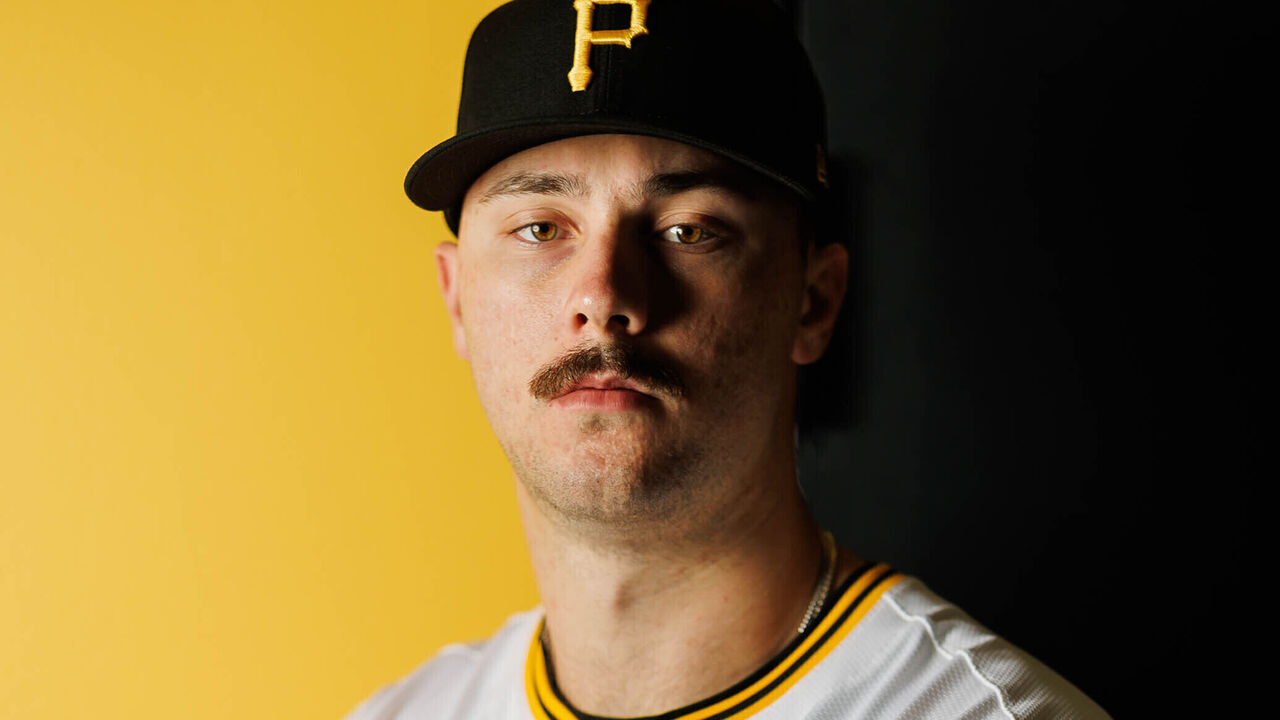
4. Roku is a great home for MLB (really)
After parting ways with Comcast/NBC streaming app Peacock on a short-lived Sunday morning game package, MLB is reportedly close to finalizing a deal with Roku to pick up that inventory.
You can hear the collective sigh as baseball asks fans to pay for yet another source for live games. And Roku isn't just an app, it's a physical device if they don't already have a Roku-powered television or streaming box. (On a positive note, it's believed the games would be available on Roku's free, ad-powered live TV platform.)
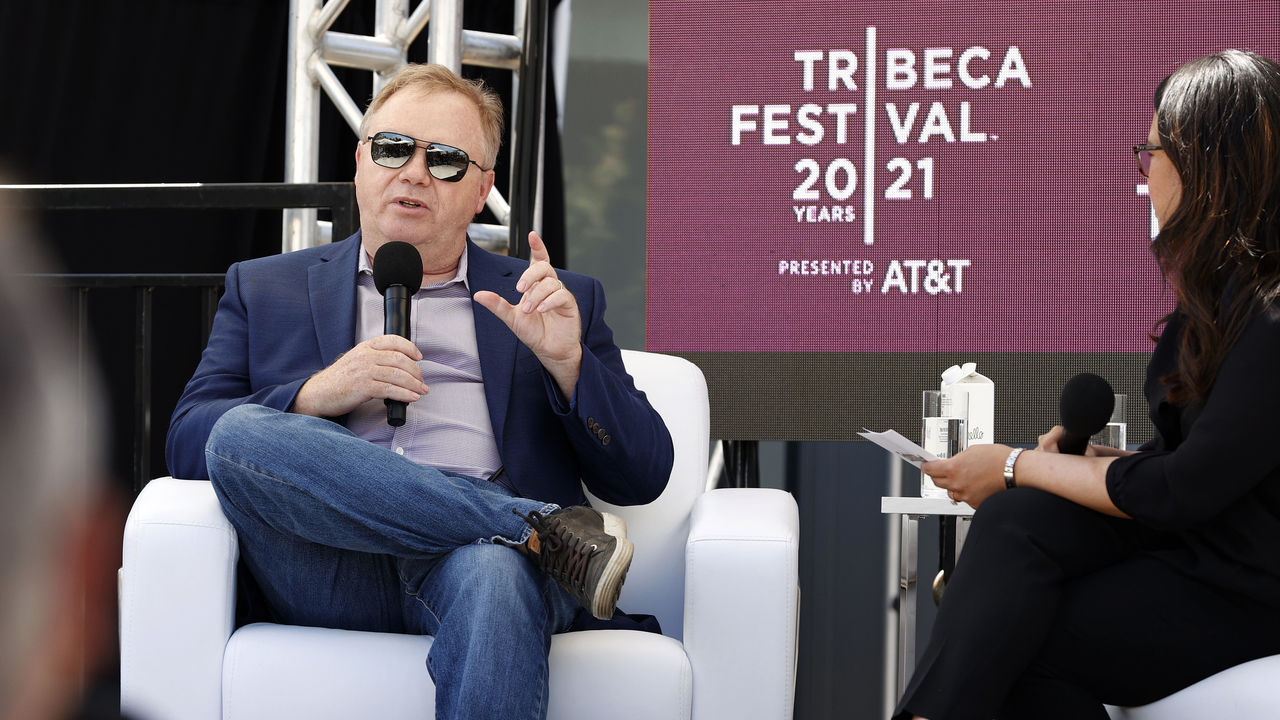
But Roku enjoys a better chance of sticking as a long-term home simply due to its user base, which now numbers more than 80 million. Most Roku users are based in North America. That's a larger user base than traditional cable has today.
MLB eventually needs to consolidate where games are available. But as a third-party partner, Roku enjoys greater reach and likely more staying power than other options.
5. Toronto's lift-and-pull problem
The Los Angeles Dodgers, Baltimore Orioles, Cleveland Guardians, Kansas City Royals, and Texas Rangers rank at the top of this important list: the ability of batters to launch balls in the air to their pull sides.
Those clubs are some of the best-hitting teams in the majors.
The Toronto Blue Jays rank in the bottom third of the league in slugging percentage, wOBA, and wRC+.
Some teams have discovered the cheat code of hitting balls where the dimensions of the field are most favorable and where the average batted-ball distance is greatest.
This is particularly true of Toronto's Rogers Centre, where outfield renovations prior to the 2023 season moved fences closer down the lines and deeper gap to gap on average.
Consider that the MLB average rate for pulling line drives and fly balls is 29.7% this season. The Blue Jays sit at 25%. Vladimir Guerrero Jr. owns a 22.2% mark, George Springer is sitting at 19.6%, and Bo Bichette is at a woeful 9.6%.
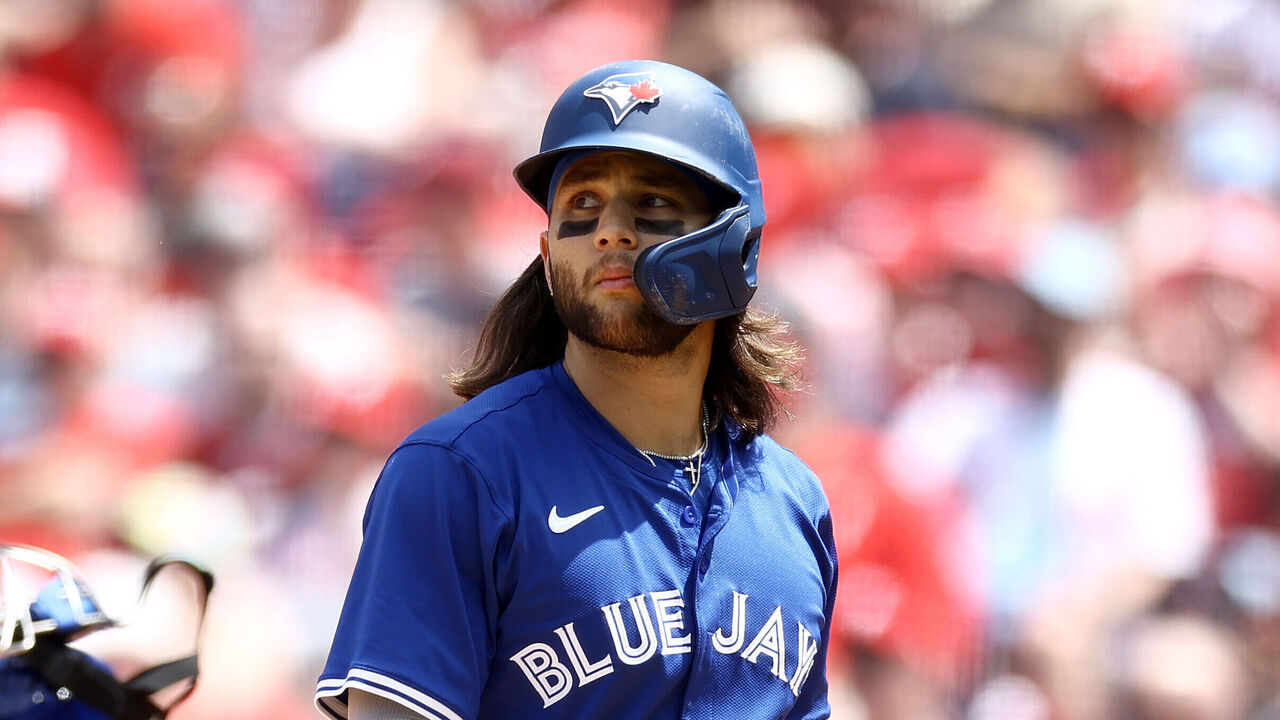
They've never been extreme pull hitters and have other offensive skills, but those marks are regressions from last year when Guerrero sported a 31% clip, Springer 29.6%, and Bichette 21.1%.
Is it a matter of coaching, players' reluctance, or other reasons? Whatever the case, the Blue Jays simply aren't tapping into power as well as they could.
6. Fixes the Jays could make today
The club could start by making Davis Schneider an everyday player.
Schneider is slowly gaining more playing time but needs to be playing all of the time for the Blue Jays, who rank 27th in runs scored after Thursday's games.
Through 235 career plate appearances, Schneider owns a 166 wRC+ going into Friday's series against Minnesota.
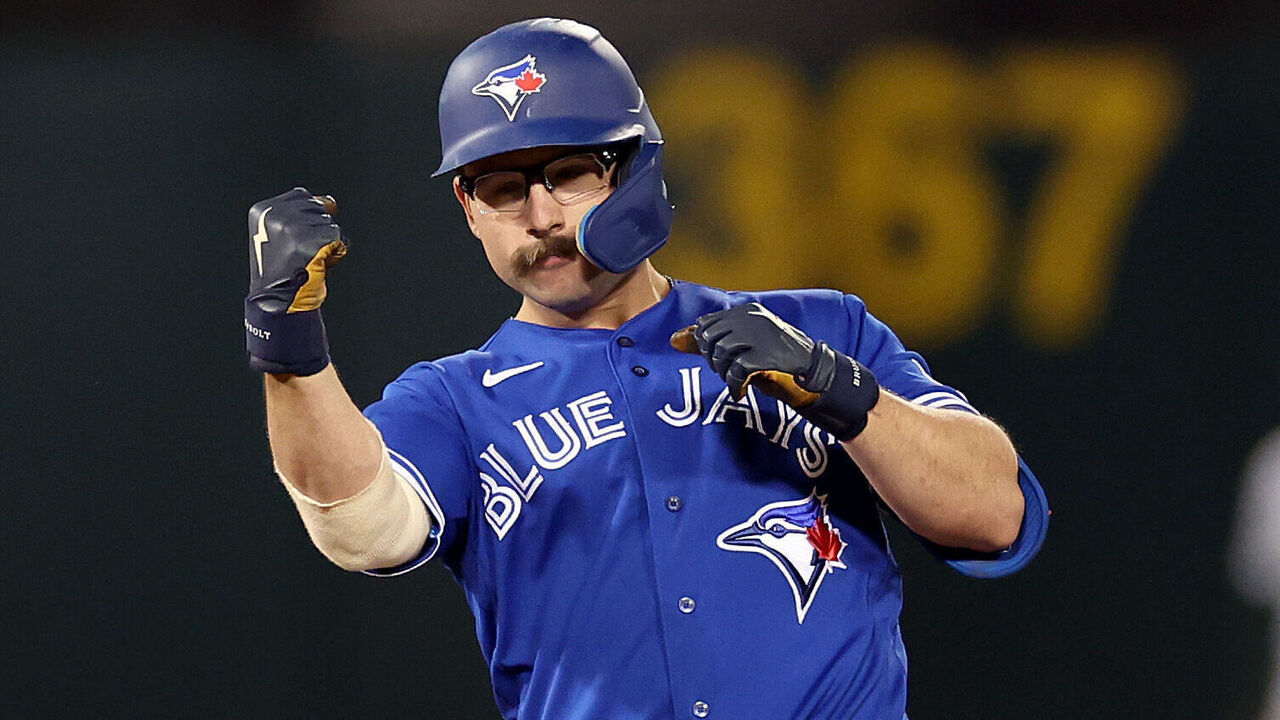
He continues to show excellent zone discipline, and, importantly, he has a knack for launching balls into the air from his pull side. He posted a team-best 46.6% pull rate on liners and fly balls last year and is again above the MLB average (38.5%). Teammate Ernie Clement is also an above-average pull-side launcher (35.7%), and he could play more often. It's the kind of skill that makes an undersized player like José Ramírez a superstar.
7. Trade season starting in May?
If you are interested in selling or buying it makes sense to do it earlier.
MLB usually sees in-season trade activity pick up around the trade deadline. Humans, generally, respond to the impetus of deadlines. However, it makes sense for teams with little ambition (like Miami) to accept their fate earlier and for hopeful contenders like San Diego to enjoy more games from the players (Luis Arráez) they acquire. By most evaluators' accounts, the Marlins received a good return without needing to leverage the deadline.
8. Bichette and Guerrero trade market
I was asked on the "Blair and Barker" show on Sportsnet 590 in Toronto on Thursday whether Bichette or Guerrero Jr. would have more trade value if they were made available this summer. Although hypothetical, the question itself says a lot about where the Jays are and how these expected cornerstone players are performing.
Given their disappointing campaigns and limited team control - each is a free agent after the 2025 season - neither has significant trade value now. The value for first basemen/designated hitters is so depressed generally that Brandon Belt is still a free agent.
The Blue Jays are better served by playing it out, seeing if fortunes can change, and - though perhaps unlikely - reaching long-term agreements.
But playing it out won't be easy in the AL East. And it's only going to become more difficult as another struggling team in the division, the Rays, gets healthier. Josh Lowe and Taj Bradley rejoined the team this week. Pete Fairbanks and Shane Baz are on rehab assignments, too.
9. Speaking of wild trade proposals ...
The Athletic's Ken Rosenthal reported the Oakland Athletics have heard from teams interested in Mason Miller, the second-year right-hander who's dominating hitters at the end of games this season.
It might seem foolish to think about trading a young pitcher with 33 strikeouts in 16 innings and a negative FIP (-0.15), but the A's are so far from title contention that trading a closer with an injury history, no matter how talented, makes a lot of sense if they can return a haul.
NSFW.
— Who’s Better Baseball (@WhosBetterBB) May 9, 2024
Mason Miller with pure filth. pic.twitter.com/ZsQL73DohB
Imagine Miller in the back end of a number of contenders' bullpens. Health is the big question regarding his long-term outlook, but there isn't a more dominant one-inning arm in the game right now. It makes a lot of sense for such a high-value, high-risk player to be on a club with higher aspirations.
Travis Sawchik is theScore's senior baseball writer.